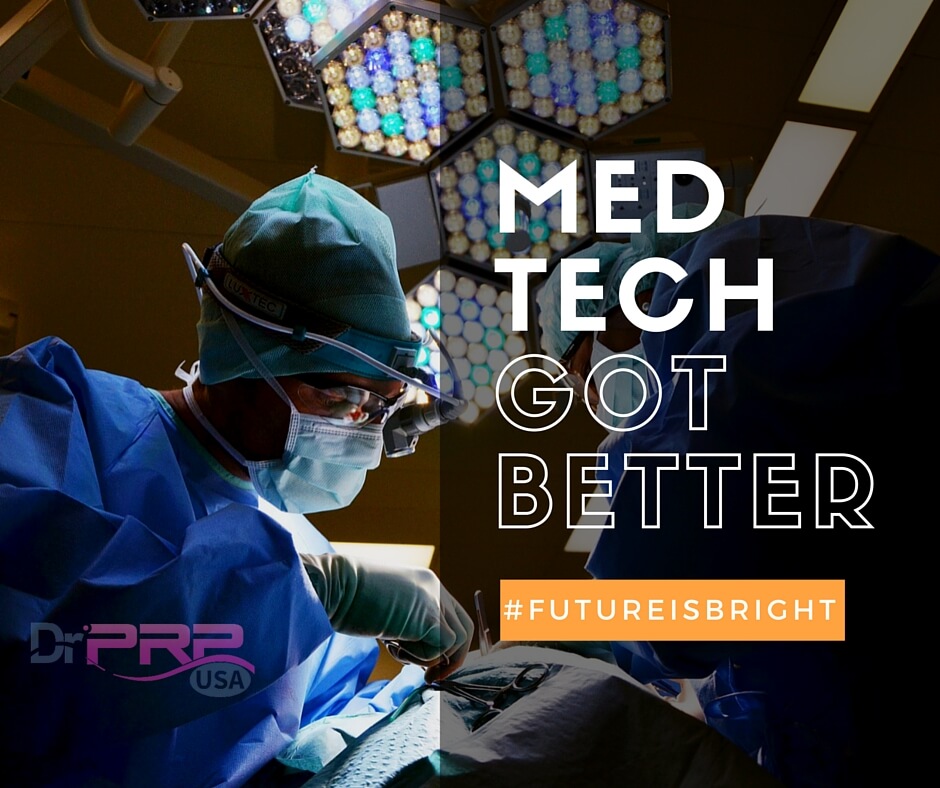| Item | Price | Qty | Total | |
|---|---|---|---|---|
 Loading Cart...
Loading Cart...Medical Technologies To Look For In 2016: Computer Assisted Orthopedic Surgery

“The day science begins to study non-physical phenomena, it will make more progress in one decade than in all
the previous centuries of its existence.”
― Nikola Tesla
Why Medical Technologies?
Technology, in general, never ceases to amaze me. From the latest iWatch to Spacex’s reusable rockets, the possibilities that technology can unleash are ginormous. We haven’t seen even a tiny fraction of it’s potential yet. That’s why I think the future of medical technology will be brighter than ever. One of the new technologies we’re anticipating will hit big in the future is computer assisted surgery. It’s already in place in certain areas but no where at the potential where it could be utilized. I’m talking about a scenario where self-learning computers will not only assist in surgery but communicate with other computers to develop new surgical procedures.
But for the sake of this blog, let’s take a look into what it is for those who’re curious.

Benefits of Computer Assisted Orthopedic Surgery
Computer assisted orthopedic surgery (CAOS), is a method of surgery that enables the surgeon to use cutting edge technology with the assistance of a computer and software. It helps in both the planning stage and the execution of the surgery. These methods allow surgeons to better visualize the target region and provides a more precise diagnosis. Computer assisted methods are valuable when the surgery requires a level of high precision, such as in orthopedic procedures.
How Does CAS work?
Computer assisted surgery permits the orthopedic surgeon to envision several multi dimensional visions of the patient’s anatomy using the computer monitor while it assists by using real time operative images of surgical instruments while they are in use, and the comparative digital placing of the surgical implant equipment. Similar to how many people use a GPS in their car for directions to their destination. A surgeon uses computer assisted surgery images to establish the location of the surgical instruments in relationship to the patient’s anatomical structure.
Multi dimensional anatomical digital images are produced from the data acquired from digital X-rays, magnetic resonance imaging (MRI), CAT scans, MRI images, fluoroscopy or ultrasounds.
Before the surgery begins, sensors are attached to the area on the patient that will be operated on, while extra sensors are merged into the surgical instruments or the implants. These sensors provide data points so the surgeon can see the exact angles and ideal positioning of the orthopedic implant or the virtual route of the medical instrumentation. The real time response helps the orthopedic surgeon to place the implants precisely and reliably.
Benefits of CAS
When an orthopedic surgeon utilizes navigation during a surgical procedure they are provided with detailed views of the joint’s structure, and the result is the placement of the implants. This computer assisted systems are also useful during slightly invasive surgery because it decreases the risk of damaging the soft tissue and improves the overall patient care.
During a joint replacement surgical procedure, the damaged joint is removed and replaced with an orthopedic implant. An implant is used to replace a knee or hip joint. Orthopedic joint implants are intended to duplicate the function and feel of the natural original joint that has been replaced. Orthopedic surgeons have been doing joint replacements for over 50 years, with the tools available today joint replacements are less invasive and have shown a to have a less complicated and quicker healing time.
Another potential benefit of computer assisted surgery is similar to that of minimally invasive surgeries. For example, surgical procedures that are performed laparoscopically, these procedures usually minimize a shorter healing time, less pain or discomfort, reduces the wear and tear of the new implants allowing for an extended lifetime for the implants. Which equals less possible surgeries in the future, less blood loss, less scarring, and overall fewer post-op complications.

Computer Assisted Knee Surgery
Knee replacement surgery, is a common option that many patients with knee problems such as osteoarthritis, traumatic knee injuries, and simple wear and tear of the knee over the years, which results in pain and difficulty walking. With the new and innovated medical advances in orthopedic surgery to these individuals who are suffering from knee problems computer assisted surgery is an ideal solution. The surgery is done with the help of computer assisted technology that improves the results and post-op recovery. During a knee replacement surgical procedure, the surgeons will carefully remove the injured joint then replace the joint with a prosthetic (natural feeling implant) that duplicates the functions of a natural knee joint. Computer assisted procedures allow for more accurate alignment of the knee implant, which results in a natural feeling in the knee. resulting in a more natural feel. By using digitized bone images, infrared imaging, and tracing devices, the computer hardware and software delivers information about the patient’s anatomy and the orthopedic surgeons are able to place the implant with precision.
Computer Assisted Hip Surgery
The hip replacement surgical procedure is also done with the use of computers and software that enrich the accuracy and consistency of the procedure. During a conventional hip replacement procedure, the surgeons will take out the ‘ball’ end of the femur and substitute it with a prosthetic section, that is held in place by a steel rod that is made to fit into the femoral neck. With computer assisted hip surgery, the computer guides the incisions to the bone, which allow for an exact implant fitting that would be otherwise challenging to accomplish. Computer assisted surgery allows surgeon to mold the hip bones in a way that permits an implant to fit more naturally. Plus, computer assisted surgery improves the precision, which allows for more long-lasting results, quicker recovery, and the potential for an improved quality of life for the patient.


